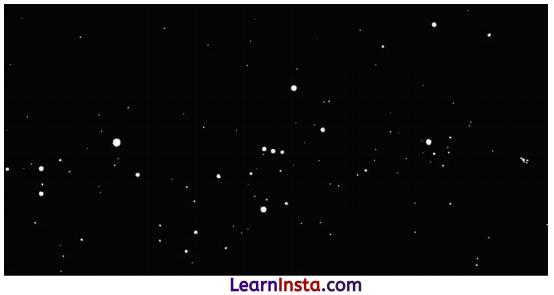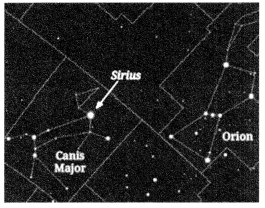Beyond Earth Class 6 Questions and Answers NCERT Solutions
Class 6 Science Chapter 12 Beyond Earth Question Answer
Let Us Enhance Our Learning
Question 1.
Match the column:

Answer:
table-1
Question 2.
(i) Solve the following riddle.
My first alphabet is in MAN but not in CAN
My second alphabet is in ACE and also in FAN
My third alphabet is in RAT but not in CAT
My fourth alphabet is in SUN but not in FUN
I am a planet that moves around the Sun.
Answer:
Mars
(ii) Make two similar riddles by yourself.
Answer:
(a) My first alphabet is in MAKE but not in CAKE My second alphabet is in BOWL and also in ROPE My third alphabet is same as second.
My fourth alphabet is in NOW and also in NEVER I am Earth’s natural satellite.
Answer:
Moon
(b) My first alphabet is in EGG and also in PEN My second alphabet is in ACE and also in FAN My third alphabet is in RAT but not in CAT My fourth alphabet is in TOY but not in BOY My fifth alphabet is in HEN but not in MEN I am a planet that moves around the Sun.
Answer:
Earth
![]()
Question 3.
Which of the following is not a member of our Solar System?
(i) Sirius
(ii) Comets
(iii) Asteroids
(iv) Pluto
Answer:
(i) Sirius
Question 4.
Which of the following is not a planet of the Sun?
(i) Jupiter
(ii) Pluto
(iii) Neptune
(iv) Saturn
Answer:
(ii) Pluto
Question 5.
Which is the brighter star, the Pole Star or Sirius?
Answer:
Sirius
Question 6.
An artist’s representation of the solar system is given in Fig. Is the order of the planets correct? If not write the correct order in the boxes in the figure.

Answer:
The order of the planets in the figure is not correct. The correct order from the Sun is: Mercury, Venus, Earth, Mars, Jupiter, Saturn, Uranus and Neptune.

Question 7.
A portion of night sky with stars is shown in the figure. Look carefully and identify the groups of stars that form the patterns-the Big dipper and the Little dipper. Draw lines to connect the stars for these patterns and label them. Also, identify and label the Pole star.

Answer:

![]()
Question 8.
A portion of the night sky is shown in Figure. Draw lines to connect the stars for Orion and label the star Sirius. You may refer to Figure.

Answer:
Orion and the star Sirius are shown below.

Question 9.
You can see stars fading away at dawn and appearing f at dusk. During the day we do not see the stars. Explain why?
Answer:
During the day, the Sun’s bright light outshines the stars, making them invisible to our eyes. The atmosphere scatters the sunlight, creating the blue sky and masking the faint light of the stars.
Question 10.
During a clear night, try to observe the Big dipper 3-4 times at an interval of 2 to 3 h Also try to locate the Pole star each time. Does the Big dipper appear to move? Draw a rough sketch to illustrate this, mentioning the time in each case.
Answer:
You will find that the Big Dipper appears to move in the sky from East to West.
Question 11.
Think about the night sky and write a poem or a story on it.
Answer:
My mother was telling a story “how the moon appears in the sky everyday.” The new days considered to be day of the moon’s evolution around the earth. On this day we cannot see the moon in the sky. During the first quarter (day 1-day 7), the moon is on the day side of the earth. During this period, on day 2 and 3, a small portion of the bright side of the moon is visible at dusk.
In the next quarter, the moon is seen at night. The bright portion of the moon visible from the earth goes on increasing up to day 14. During the next two quarters (day 14 to day 28), the bright portion of the Moon that is visible from the earth goes on decreasing. In the last quarter, (day 21 – 28 days) the moon is once again visible during the day until the new moon day when it cannot be seen at all.